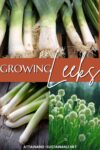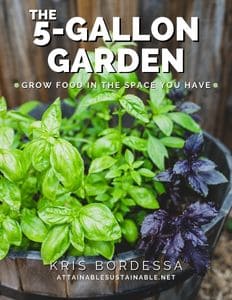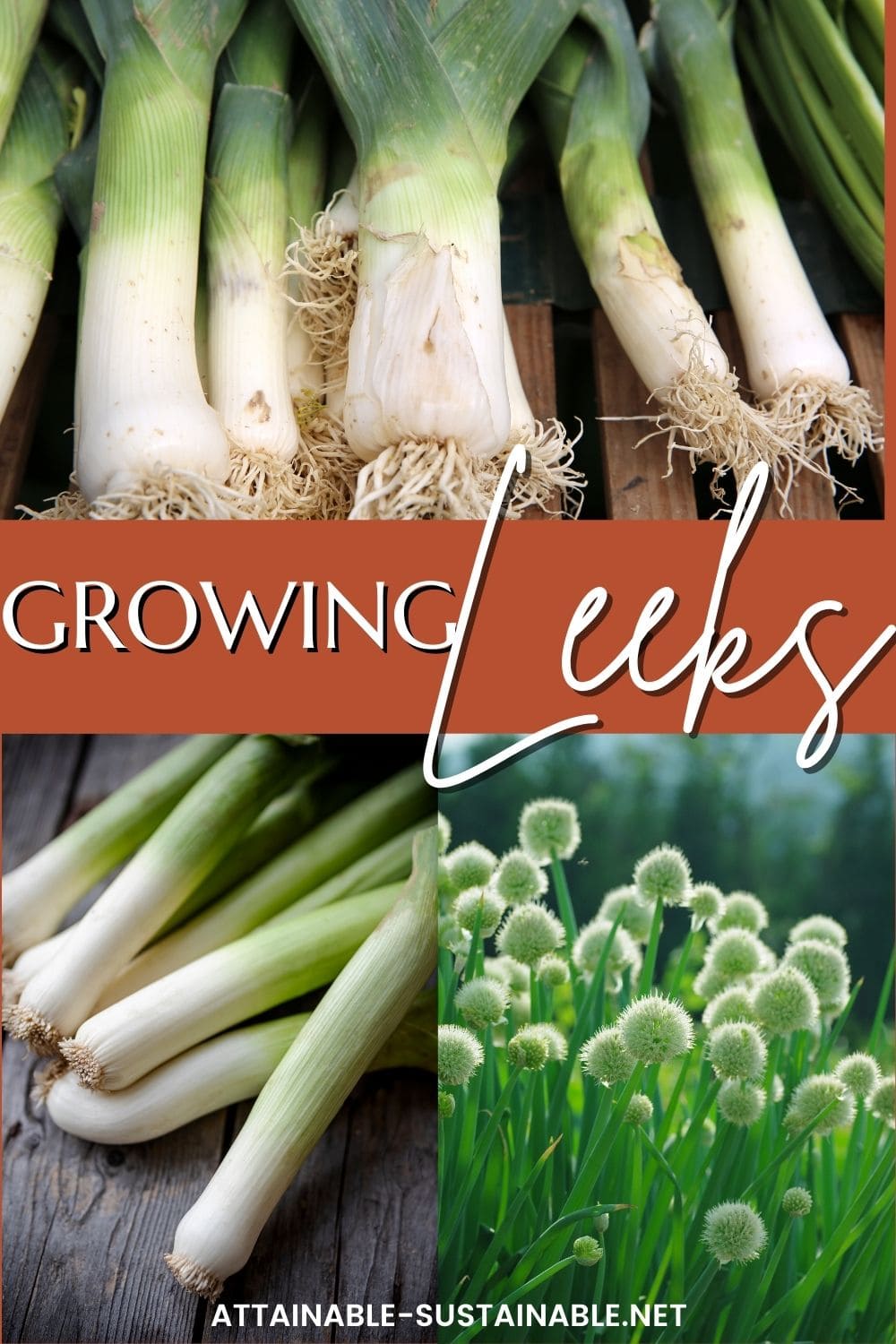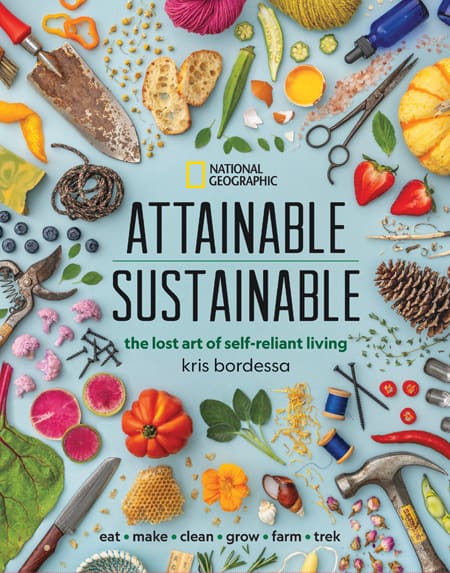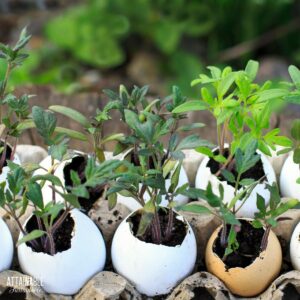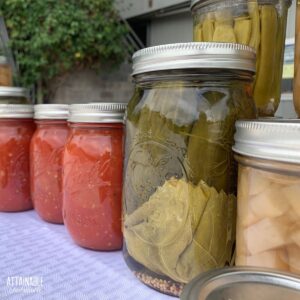Growing leeks is a great way to use some of your home garden space. Leeks are alliums that are like a large cousin to green onions, and they taste just as delicious. Easily grown in your cool-weather garden, leeks can grow for an extended season to keep the versatile and mild flavor in your culinary creations all season long.
Read about more cool-weather crops to extend your garden season!
Contributed by Jodi Torpey, author and Master Gardener.
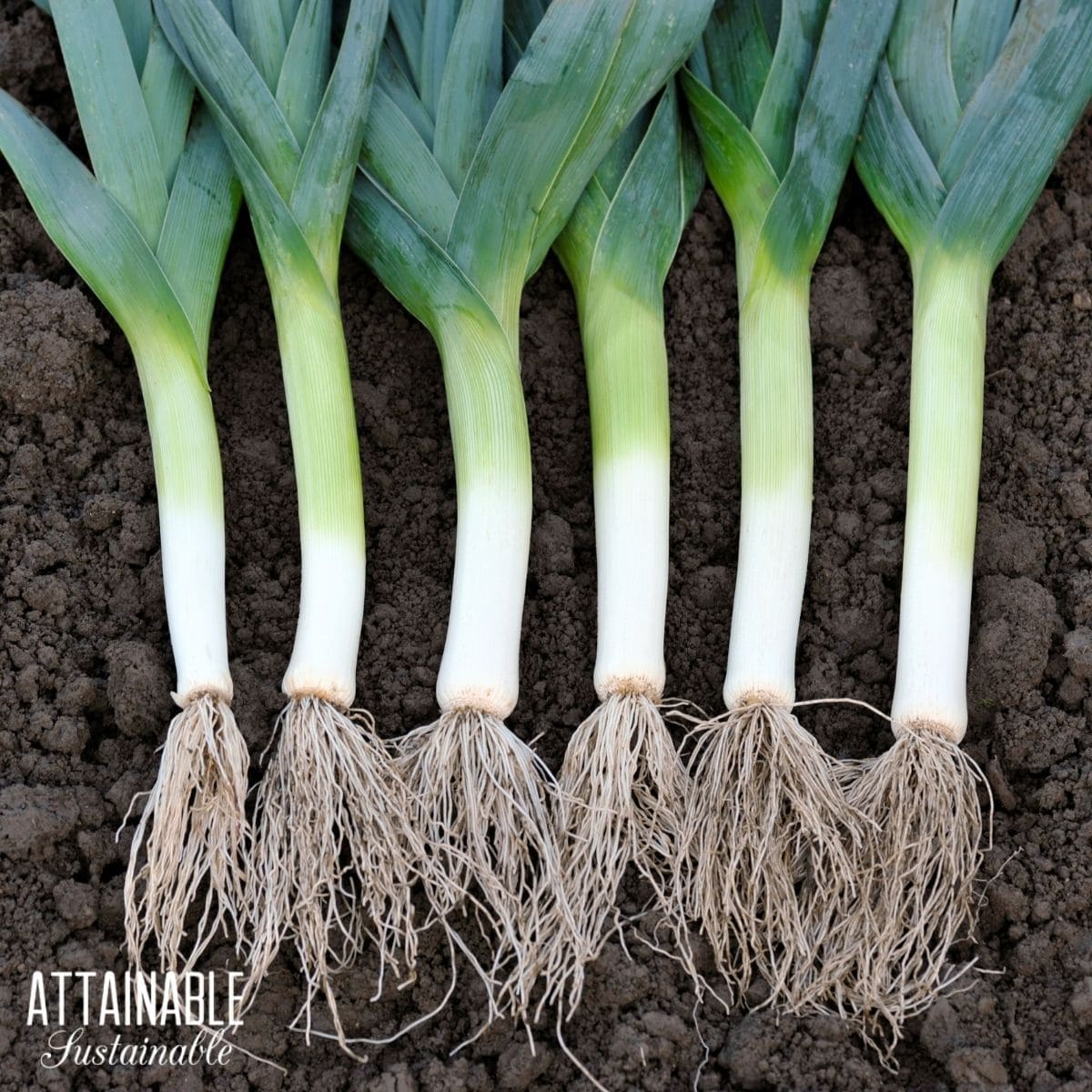
Growing lovely white leeks
For more than 5,000 years, people have been eating alliums known as leeks. Leeks are similar in appearance to green onions but larger. These plants taste a bit alike and grow in similar ways and can be considered cool-season crops for planting in the spring and fall.
Leeks (Allium porrum) are related to both garlic and onion plants and look like extra-large scallions with their thick white stalks and broad, flat, dark green leaves.
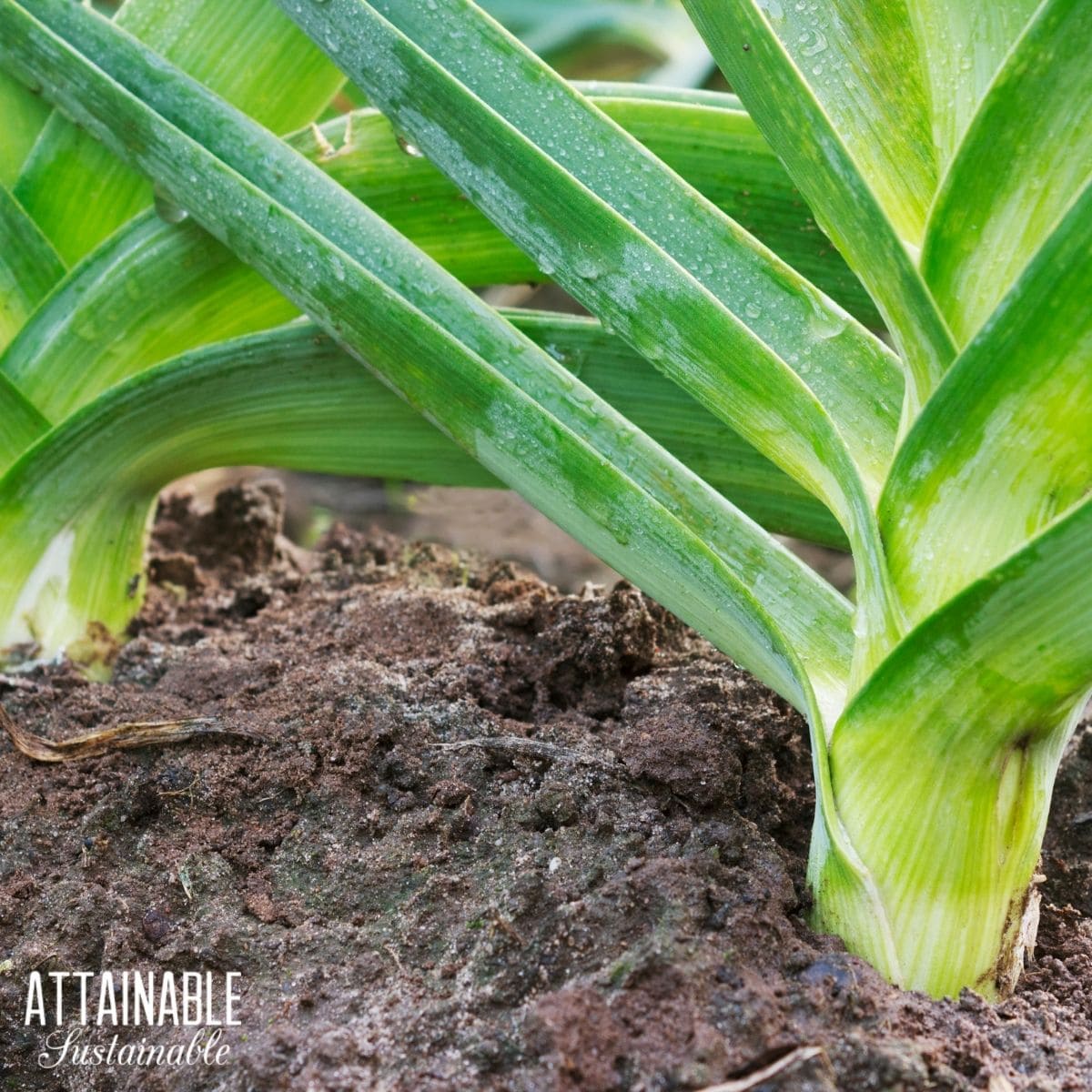
Leeks have broad flat leaves
These plants are easy to grow, with the right amount of planning. Some leek varieties may take over 100 days to mature.
Grow Some Greens!
Ready to grow fresh greens, no matter WHERE you live? Sign up for my
FREE quick-start guide and start growing some of your own food!
Leeks can be planted from seeds or transplants and typically need a longer growing season. For seeds, you can start them indoors, start them in cold frames or sow seeds directly in the garden. Check the amount of time needed for plants to mature and start indoors well in advance of the last frost, which could be 8 to 10 weeks before the last average frost date for your area.
New to gardening? Limited on space? The 5-Gallon Garden gives you the skills you need to grow food in the space you have. Get started with your garden today!
Varieties of leeks
Zermatt is a Swiss Giant type leek that matures early and features upright stalks. Can be harvested early for use as baby leeks (85 days).
Giant Musselburgh is said to be one of the best winter-hardy leeks to grow. This extra-large heirloom variety is dependable with smooth tender stalks (105 days).
Tadorna leeks have long white shafts topped with blue-green leaves. These leeks hold well in the ground to 20 degrees and have good disease resistance (100 days).
Lancelot is a quick-maturing smaller leek that’s virus tolerant and bolt resistant. (70 days).
How to Grow Leeks
When planting in the spring garden, wait for the soil to warm to at least 50 degrees and up to 85 degrees. You can also plan for a fall planting.
Plant leek seeds ¼ to ½ inch deep and 4-5 inches apart. If you choose to use leek plants, place them a little deeper than onions, about 4 to 8 inches deep and at least 4 inches apart. Rows should be 12-18 inches apart.
The long white stalks of leeks can be encouraged by slightly hilling soil around plants when their tops are about 4 inches tall. Continue hilling leeks at intervals to ensure long white stalks are prized for cooking. An alternative to hilling is to plant each leek in a deep hole in the soil.
Prepare the garden bed so the plants will grow in a sunny spot, in rich well-draining soil. Add compost or well-aged manure and dig it in deeply to give roots an easier time getting started.
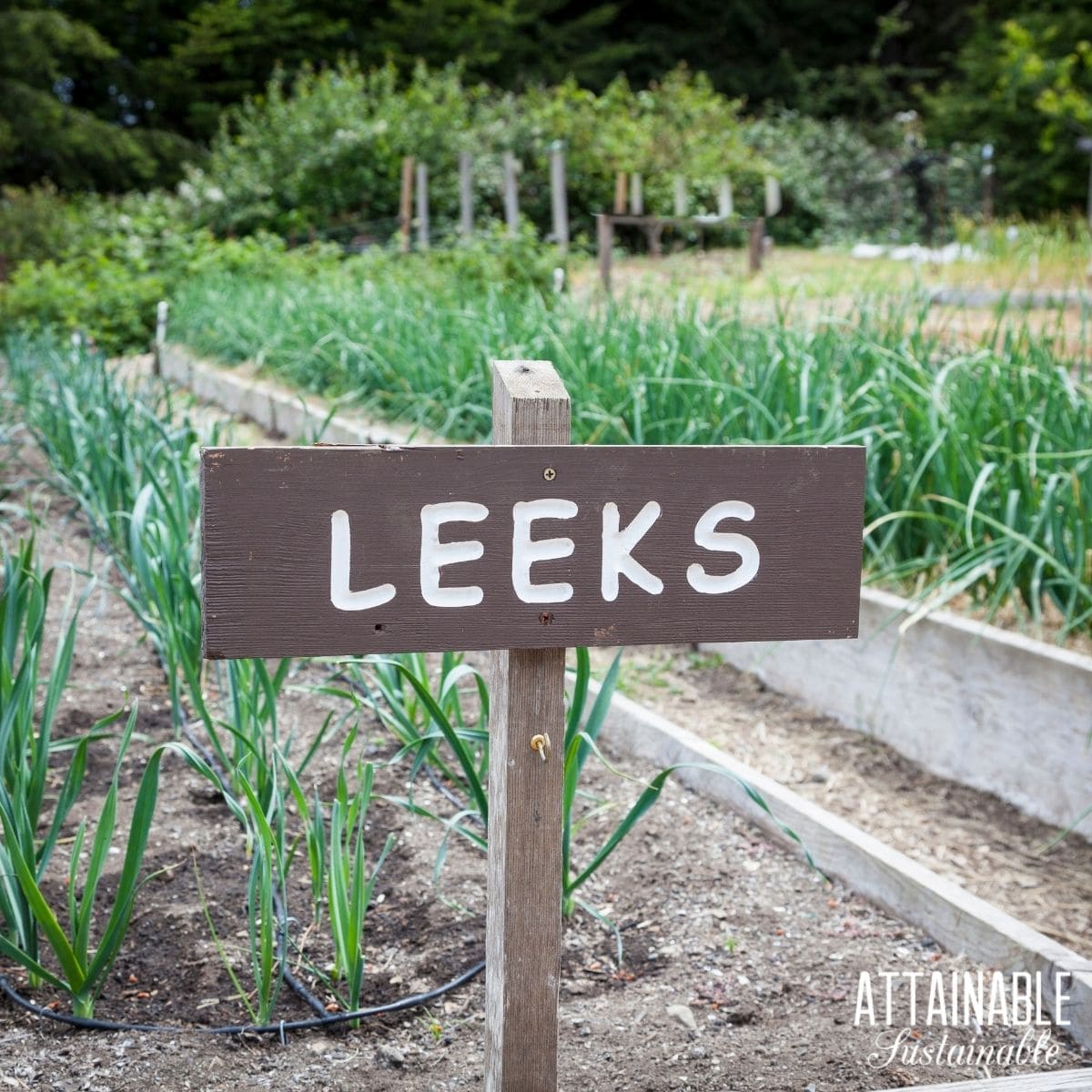
Grow leeks in your garden
Requirements for growing leeks
Soil requirements
Amend the soil with organic matter, such as good quality compost. The soil needs to be rich and well-draining but should be able to hold some moisture. Loosen the soil at least 8 inches deep to help delicate roots grow.
After the leeks start to grow, add an organic mulch around plants to help the soil retain moisture and to avoid weeding around the delicate and shallow roots.
Light requirements
Locate in a full-sun spot in the vegetable garden, raised bed garden, or patio garden.
Fertilizer and water requirements
Add a well-balanced fertilizer while plants are growing to ensure healthy plants. Keep up with a steady supply of nitrogen-rich fertilizer as plants grow.
Water is important for leeks, and soaker hoses make it convenient to keep the soil consistently moist. Avoid soil that’s too soggy or too dry. It’s important to keep the leaves dry to prevent fungal problems.
Prevent problems with leeks
When choosing leek varieties, look for those that have been bred to be disease resistant. Also, good garden practices help prevent disease and pest problems. For example, don’t plant leeks in the same spot every year, thin plants to give them room to grow, mulch to reduce weeds, and keep the soil moist, not soggy.
Prevent onion thrips by watching for any rusty streaks on the green leaves. Use the hose to wash thrips off of plants.
Prevent onion maggots from attacking plants by using row cover cloth to cover young plants to keep onion maggot flies from laying eggs. Be sure to tie the cloth down tightly on the edges.
Growing leeks in containers
Leeks can grow well in containers, under the right conditions. Select a large container filled with potting soil. Ensure there are holes in the container’s bottom for water to drain.
Dig in a slow-release fertilizer with the potting soil and plant leeks as seeds or transplants just as you would in the garden bed or a raised bed.
Water plants and keep the soil moist; thin plants as needed for the correct spacing for the varieties you’ve planted.
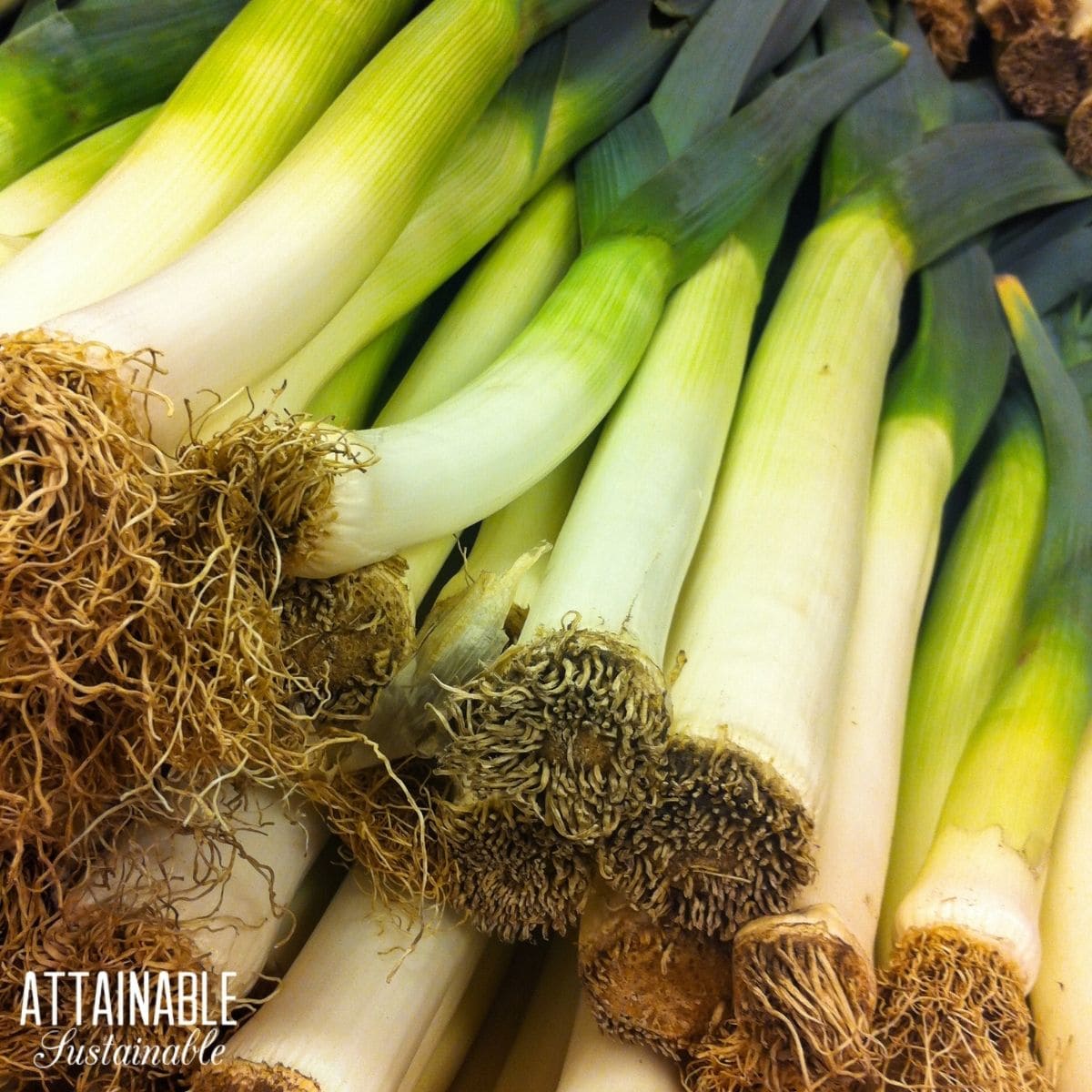
Harvest leeks
How to harvest leeks
Harvest leeks when they have crisp, brightly colored leaves and when stalks are about ½ to 1 inch in diameter with about 5 or 6 inches of white stem. Smaller leeks will be more tender than larger ones. Be sure to clean leeks thoroughly before cooking. First, trim the roots and leaves, then slit the leeks all the way down one side. Rinse to remove soil hidden between the leaf layers.
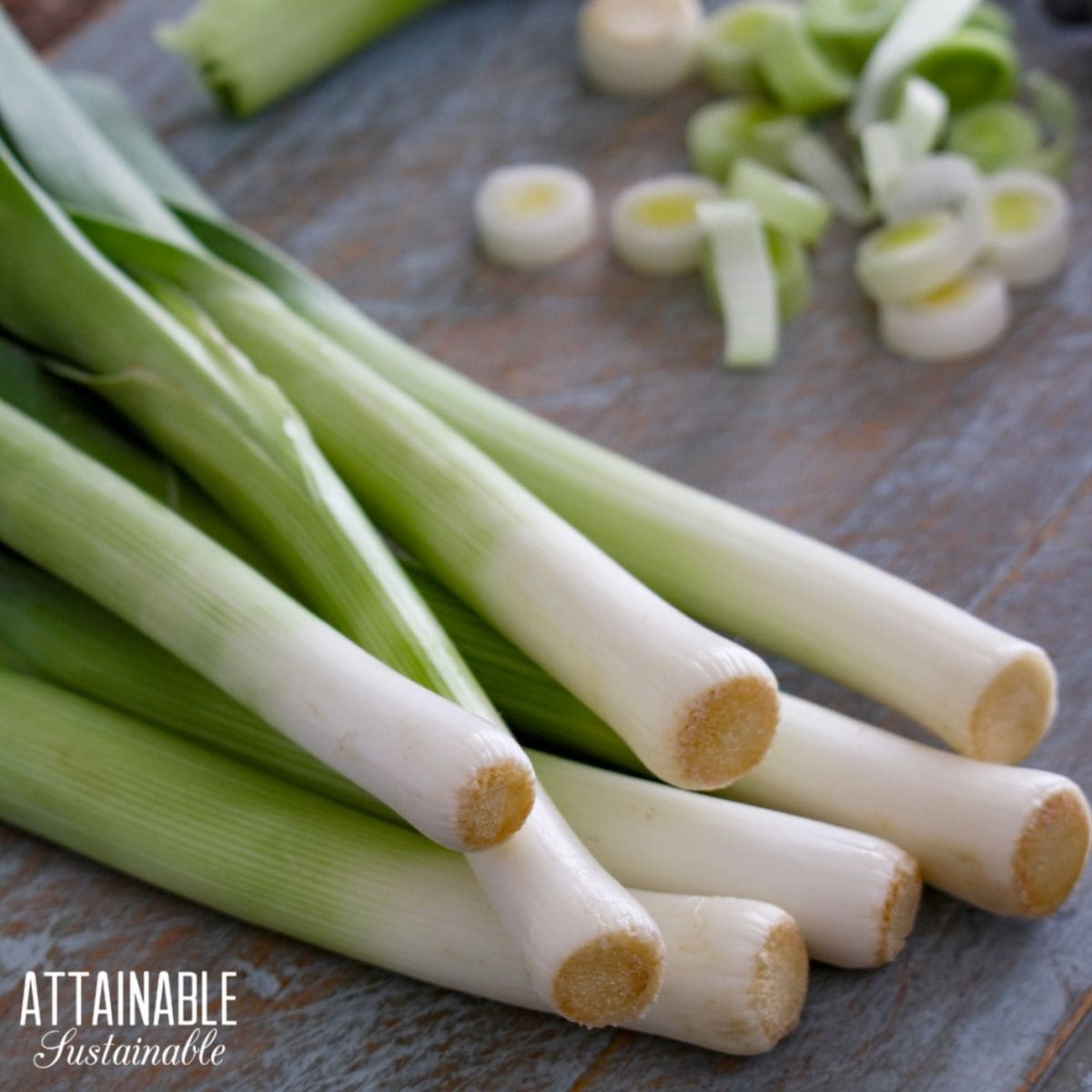
Leeks add flavor to a variety of dishes.
How to use leeks in the kitchen
Slice or chop leeks to add to fresh salads or cooked into hearty soups, stews, and other recipes, but they can also be roasted whole and served as a vegetable side dish.
How to propagate leeks
Leeks take two seasons to produce seeds for saving. You can either let some leeks overwinter in the garden or dig a few up to store inside and replant in spring.
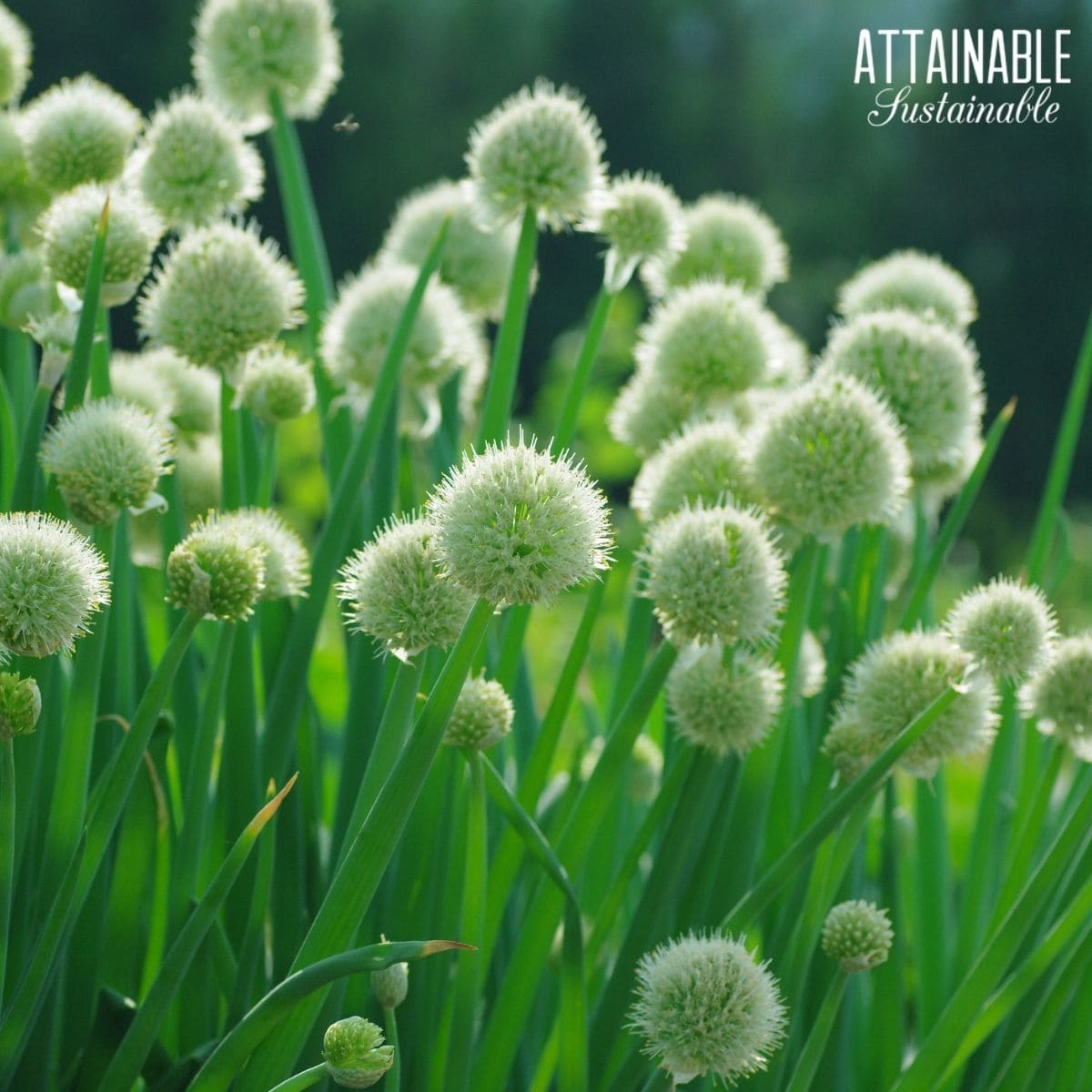
Leek flowers to seed
Wait for plants to grow a tall flower stalk and produce pods that are filled with little seeds. Cut the stem about 8 inches below the seed head and place it on a screen to finish drying. Store seeds in a cool, dry space.
